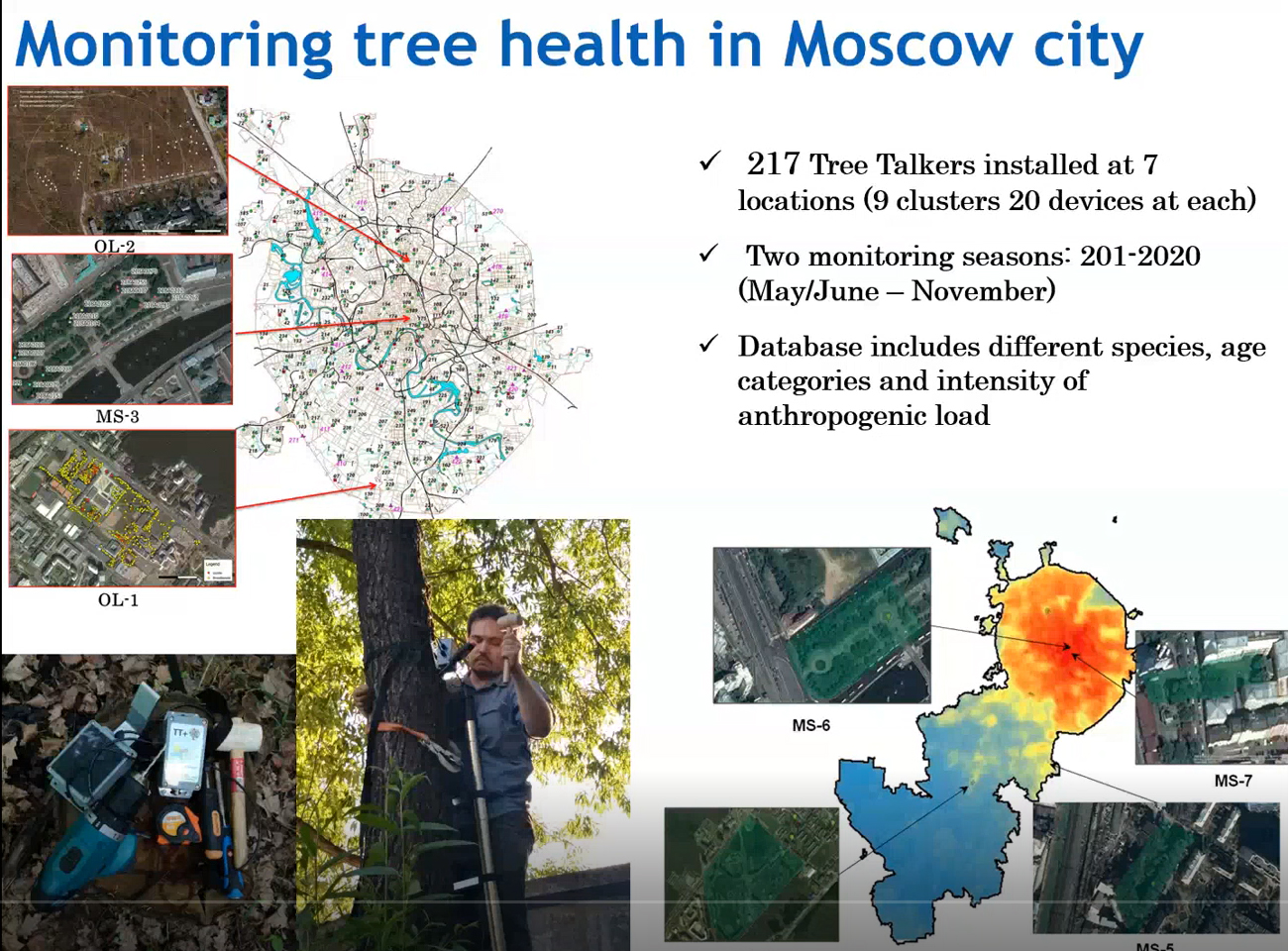On September 30, 2020, an international scientific seminar “Monitoring urban green infrastructures” was organized under the umbrella of the Department of Landscape Design and Sustainable Ecosystems of ATI RUDN University. The event was held in an online format and was devoted to a number of issues in the field of monitoring green infrastructure in cities using IoT technologies.
Experts and participants discussed topics such as express methods for assessing the physiological state of green spaces, the influence of environmental factors on the state of plants, timely diagnosis of plant diseases and the development of methods for plant protection. Among the participants of the seminar are experts from the Smart Urban Nature laboratory Vyacheslav Vasenev, Alexey Yaroslavtsev, Vasily Brykov, Yuri Dvornikov and Viktor Matasov as well as partners from the Russian Research Institute of Phytopathology, N.V. Tsitsin Main Botanical Garden of RAS and other organizations.
Vyacheslav Vasenev was the first to make a report on The Smart Urban Trees Project: goals and main outcomes. On behalf of the project manager Ricardo Valentini and as his co-author, Dr. Vasenev presented the results of a research aimed at studying IoT technologies for use in monitoring and assessing the state of urban green infrastructure. The study was based on the use of Tree Talker sensors, a technology for integral express analysis of the physiological state of trees. The experts noted the creation of an extensive regional network of sensors (more than 200 devices in Moscow and St. Petersburg) as the most significant achievement based on the results of the study, which the team plans to expand to other cities.
Pointing to the main reasons for studying smart technologies in the context of urban green infrastructures, Vyacheslav Vasenev said: “Smart technologies provide not only the ability to obtain data with high spatial resolution and high frequency, which is necessary for such a heterogeneous environment as urban green spaces, but also a significant user-friendly focus – compared to traditional methods. Using smart technologies, we obtain both standard physiological characteristics of the state of trees and their interpretation in terms of functions, ecosystem services, treatment recommendations and management.”
The next report on IoT technology for monitoring plant diseases was also presented by experts from the Smart Urban Nature laboratory Vasily Brykov, Ramilla Brykova and Olga Fareeva. Their team investigated the possibility of using smart technology in the study of various plant diseases.
Further, the report A comparable assessment of vegetation indexes by Tree Talkers and remote sensing: the view from above or from below was made by Yuri Dvornikov, a postdoc of RUDN University. He presented the results of a study that compared vegetation index data obtained from Tree Talkers sensors and remote sensing technologies.
The next report, Exploring IoT technologies to monitor urban green infrastructure in different abiotic conditions (summary of the experiments on waterlogging, water scarcity and salinity and wind effect), was presented by Alexey Yaroslavtsev. The goal of his project was to study IoT devices for monitoring green spaces in different abiotic conditions.
The seminar ended with a report on IoT monitoring of urban tree ecosystem services: possibilities and challenges, authored by Viktor Matasov, a postdoc of RUDN University and an expert from the SUN laboratory. The research was aimed at studying the regulating ecosystem services in the field of global and local climate, water regulation and air quality – using IoT technologies.
After each presentation, a small discussion was held, during which experts questioned a speaker, discussed controversial points and shared recommendations.

